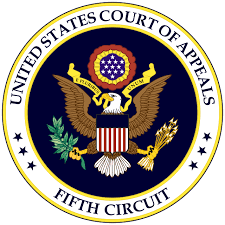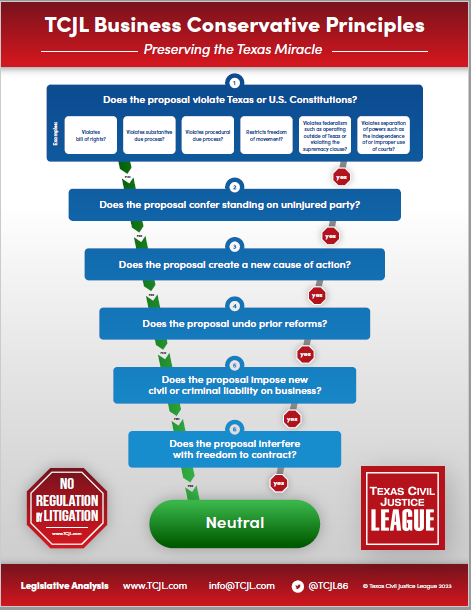 The Texas Supreme Court has agreed to review another certified question from the U.S. Fifth Circuit Court of Appeals concerning a landowner’s responsibility to protect invitees from naturally accumulating rainfall on the property under a negligent undertaking theory.
The Texas Supreme Court has agreed to review another certified question from the U.S. Fifth Circuit Court of Appeals concerning a landowner’s responsibility to protect invitees from naturally accumulating rainfall on the property under a negligent undertaking theory.
Rogelio Barron, et. al. v. United States of America (No. 24-0627; granted August 9, 2024) follows the death of Plaintiff’s son. Decedent, a civilian contractor employed at Camp Bullis, a military facility near San Antonio, drowned on one of its main roads when a sudden flash flood swept away his vehicle at a low-water crossing. The Camp’s safety precautions required nearby military units to “either [lock] or [guard]” each Impact Area gate in the event of a threat of flooding. However, these “precautions” were not observed on the morning of the storm that produced the flood. Instead, on-duty officers never inspected the road’s low water crossing gates, leaving them open.
Plaintiff sued the United States under the Federal Tort Claims Act (FTCA), alleging general negligence, premises liability, and negligent undertaking. Plaintiff’s claims were initially dismissed by the district court, which found the allegedly breached duties of care were “discretionary functions” and thereby exempt them from the FTCA’s waiver of sovereign immunity. However, the U.S. Fifth Circuit Court of Appeals reversed and remanded because the safety regulations in question “did not confer discretion” but established a duty of affirmative action. Back at the district court, Defendant moved for summary judgment on liability, which the court granted. The court rejected all of Plaintiff’s claims, finding: (1) general negligence was legally barred, (2) premises liability was precluded by the natural accumulation doctrine, and (3) negligent undertaking was inadequately pleaded, making Plaintiffs ineligible to amend the claim on leave. Plaintiffs appealed.
The Fifth Circuit Court unanimously affirmed summary judgment on Plaintiff’s negligence and premises liability claims. It opined that since general negligence and premises liability are mutually exclusive causes of action under Texas law [citing Occidental Chem. Corp. v. Jenkins, 478 S.W.3d 640, 644 (Tex. 2016)], and that the Plaintiff’s “claim in this case sounds in premises liability,” Plaintiff had no negligence claim. As to the premises liability claim, the court found that it failed as a matter of law. Since the injury stemmed from naturally accumulating rain, the “natural accumulation doctrine barred Plaintiff’s claim.” See, e.g., M.O. Dental Lab v. Rape, 139 S.W.3d 671, 675–76 (Tex. 2004). Plaintiff’s negligent undertaking claim, however, divided the Court.
Judge Elrod found the Plaintiff adequately claimed negligent undertaking. Holding that the Plaintiffs’ failure to “expressly” assert a negligent undertaking claim did not constitute forfeiture (Fed. R. Civ. P. 8(a)(2)), she opined that Plaintiff fulfilled each of the claim’s requirements by showing that Defendant: (1) “[h]ad a duty… and responsibility to close, block, or otherwise restrict access to low water crossings,” (2) Defendant failed to exercise reasonable care by not inspecting the Wilkerson crossing and leaving it unlocked, which in turn created “an unreasonably dangerous condition,” and (3) Plaintiff “reasonably believed the… [c]rossing was safe… to be crossed for civilian workers like him, because it was unlocked.” Judge Ramirez dissented, arguing Plaintiff never claimed negligent undertaking in the first place by: (1) failing to “expressly” plead negligent undertaking in his third amended complaint, thereby forfeiting the claim (Jackson v. Gautreaux, 3 F.4th 182, 188 (5th Cir. 2021)); (2) violating Rule 8(a)(2) by not explaining why the negligent undertaking theory should be extended in a context not yet recognized by state courts; and (3) failing to plead all elements of negligent undertaking. Thus, she opposed certification.
However as Circuit Judge Elrod pointed out, the parties’ uncertainty about how the claim would harmonize with the premises liability claim, along with the accumulation doctrine’s preclusive effect, merited the question: “[c]an a landowner’s affirmative act create a duty to protect an invitee from dangers caused by naturally occurring conditions under a theory of negligent undertaking where the natural accumulation doctrine bars recovery under a theory of premises liability?”
How might SCOTX respond? Here is what the Court said about negligent undertaking in Nall v. Plunkett, 404 S.W.3d 552, 555-56 (Tex. 2013):
Like the court of appeals, we construe Plunkett’s petition as alleging two causes of action against the Nalls: (1) “common law negligence” based on the Nalls’ failure to “exercise due care in their undertaking” (the negligent-undertaking claim), and (2) premises liability. The critical inquiry concerning the duty element of a negligent-undertaking theory is whether a defendant acted in a way that requires the imposition of a duty where one otherwise would not exist. See Torrington Co. v. Stutzman, 46 S.W.3d 829, 838–39 (Tex.2000); see also Osuna v. S. Pac. R.R., 641 S.W.2d 229, 230(Tex.1982) (“Having undertaken to place a flashing light at the crossing for the purpose of warning travelers, the railroad was under a duty to keep the signal in good repair, even though the signal was not legally required.”). In Torrington, we held that a jury submission for a negligence claim predicated on a negligent-undertaking theory requires a broad-form negligence question accompanied by instructions detailing the essential elements of an undertaking claim. Torrington, 46 S.W.3d at 838–39. Accordingly, the broad-form submission for a typical negligence claim and a negligent-undertaking claim is the same, except that an undertaking claim requires the trial court to instruct the jury that a defendant is negligent only if: (1) the defendant undertook to perform services that it knew or should have known were necessary for the plaintiff’s protection; (2) the defendant failed to exercise reasonable care in performing those services; and either (a) the plaintiff relied upon the defendant’s performance, or (b) the defendant’s performance increased the plaintiff’s risk of harm. Id.; see also Restatement (Second) of Torts § 324A (providing the rule for liability to a third person for negligent performance of an undertaking).
BUT, here’s what the Court said in Jenkins:
Depending on the circumstances, a person injured on another’s property may have either a negligence claim or a premises-liability claim against the property owner. Keetch v. Kroger Co., 845 S.W.2d 262, 264 (Tex.1992). When the injury is the result of a contemporaneous, negligent activity on the property, ordinary negligence principles apply. Id. When the injury is the result of the property’s condition rather than an activity, premises-liability principles apply. H.E. Butt Grocery Co. v. Warner, 845 S.W.2d 258, 259(Tex.1992). Although premises liability is itself a branch of negligence law, it is a “special form” with different elements that define a property owner or occupant’s duty with respect to those who enter the property. W. Invs., Inc. v. Urena, 162 S.W.3d 547, 550 (Tex.2005). Under premises-liability principles, a property owner generally owes those invited onto the property a duty to make the premises safe or to warn of dangerous conditions as reasonably prudent under the circumstances. Corbin v. Safeway Stores, Inc.,648 S.W.2d 292, 295 (Tex.1983); Smith v. Henger, 148 Tex. 456, 226 S.W.2d 425, 431 (1950). That duty generally runs with the ownership or control of the property and upon a sale ordinarily passes to the new owner. See Restatement (Second) of Torts §§ 351–54 (1965).
Judge Elrod has already said that the present case sounds in premises liability, not negligence, and that under Texas law, it rises or falls on a premises liability theory. Jenkins seems to draw the distinction between premises liability and negligence based on whether the case involves a “condition of the property” or an “activity on the property.” And, as SCOTX said in Nalls, negligent undertaking is a kind of “sub-theory” derived from general negligence, requiring a broad-form jury instruction for negligence with additional instructions. Apparently, Judge Elrod thought that this case sounds in premises liability because it involved a “condition of the property”—a low-water crossing in a state of flood caused by naturally accumulating rainwater. Under Plaintiff’s negligent undertaking theory, however, it wasn’t the floodthat caused the harm, but the negligent failure of the army to close the gates as it “undertook” to do in the event of a flood. The problem we see is that any number of premises liability claims that won’t fly under their own steam can simply be repleaded as negligent undertaking claims alleging that a landowner did or didn’t do something. If that’s the case, then we would advise landowners never to “undertake” to do anything beyond the bare requirements of premises liability because, where litigation is concerned, no good deed will go unpunished.
SCOTX has scheduled oral argument on October 31. It goes without saying (but we’ll say it anyway) that the Court’s response could have very significant implications for landowner liability in Texas. Although the defendant in this case may be the federal government, a decision recognizing negligent undertaking as a viable theory where a premises liability claim fails as a matter of law would affect all landowners and raise their risk exposure in unpredictable ways.












